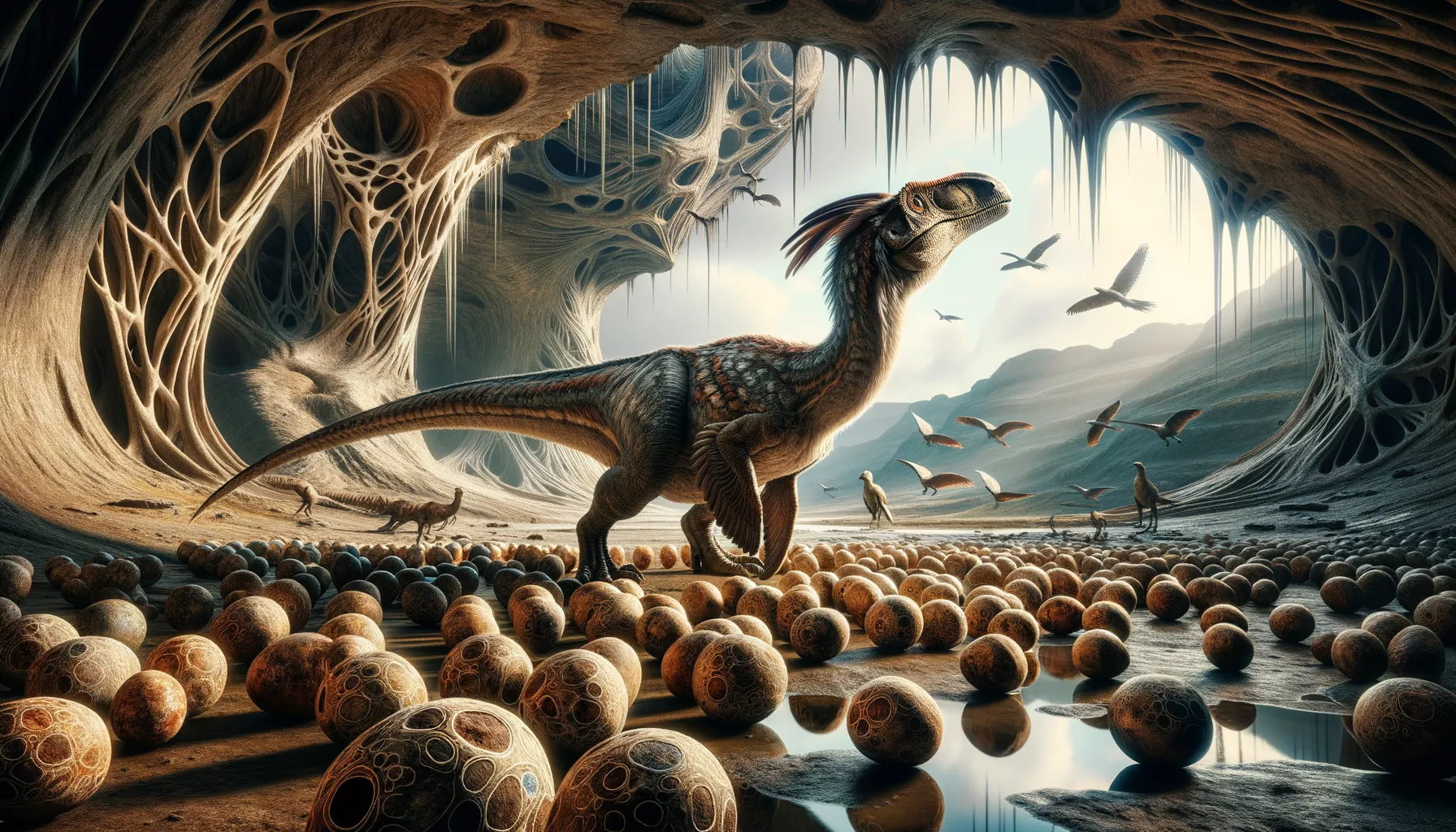
Beibeilong
The grand bird ancestor from ancient Cretaceous!
Period
Cretaceous
Length
Length could reach up to 8 meters.
Height
Approximately 2.5 meters tall at the hip.
Weight
Estimated to weigh around 2,500 kilograms.
Beibeilong, commonly referred to as 'baby dragon,' was a large oviraptorosaur dinosaur known for its enormous size and presence of fossilized eggs. Its discovery shed light on the diversity of theropods in the Cretaceous period. This egg-laying giant was closely related to modern birds, emphasizing the connection between ancient theropods and today's avian species. Its fossils provide significant insights into the evolution of bird-like features.
Diet
Beibeilong was likely omnivorous, feeding on a variety of plant and animal matter. Its beak could have been used to break open tough vegetation or to catch small prey.
Hunting
As an omnivore, Beibeilong was not a specialized hunter. It may have used its beak and size to fend off predators and to scavenge for food opportunistically.
Environmental challenges
Beibeilong lived in a dynamic and changing environment, with fluctuating temperatures and periodic flooding. These conditions required adaptability to varying food sources and nesting sites. Predation from larger theropods was a constant threat, impacting their survival strategies.
Speed
Moderately fast runner for short distances.
Lifespan
Lifespan likely spanned several decades.
First discovery
Fossils were first discovered in Henan, China, in the 1990s.
Fun Facts
- Beibeilong is also known as 'baby dragon' due to its fascinating name meaning in Chinese.
- This dinosaur lived around 90 million years ago during the Late Cretaceous period.
- Beibeilong's fossils were first discovered in China, revealing its eggs were among the largest dinosaur eggs ever found.
- The Beibeilong fossils included a rare find of an embryo, giving scientists a unique glimpse into its developmental stage.
- Beibeilong belonged to the oviraptorosaurian theropods, a group of feathered dinosaurs closely related to modern birds.
- Each Beibeilong egg weighed about 5 kilograms, which is similar to the weight of a medium-sized bowling ball.
- Despite the nickname 'baby dragon,' Beibeilong wasn't a dragon, but it likely looked similar to a giant bird with feathers.
Growth and Development
Beibeilong likely experienced rapid growth in its early years, similar to modern birds. It hatched from enormous eggs, some of the largest discovered, indicating a high level of parental investment. Juveniles possibly formed groups for enhanced protection and learning.
Habitat
Beibeilong's habitat consisted of forested areas with access to abundant water sources. These environments were rich in flora and fauna, providing ample food and shelter. The presence of nests suggests nesting colonies on elevated grounds safely away from flooding.
Interaction with other species
Beibeilong interacted with a variety of contemporary species, both as potential prey and as competitors for resources. Their size deterred many predators, but they likely had to share territory with other herbivores and smaller oviraptorosaurs. Fossils suggest social behaviors possibly including cooperative nesting.
Natural lifespan
Their natural lifespan could have reached 30 years or more.
Reproduction
Beibeilong reproduced by laying large, carefully arranged clutches of eggs, often in large nests. Fossil evidence indicates a communal nesting behavior, with several individuals possibly contributing to and guarding the nest. This indicates a high level of parental care and social structure.
Social behaviour
These dinosaurs may have lived in small social groups, aiding in mutual protection. They possibly engaged in communal activities, including cooperative care of young and group nesting. Display behaviors might have been prominent for mating and territory establishment.
Fossil locations
Fossils of Beibeilong have predominantly been found in Henan Province, China. The species is known from well-preserved eggs and embryonic remains. These finds have provided key insights into the life history and development of oviraptorosaurs.
